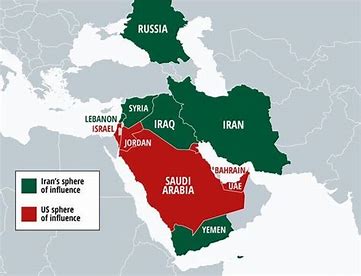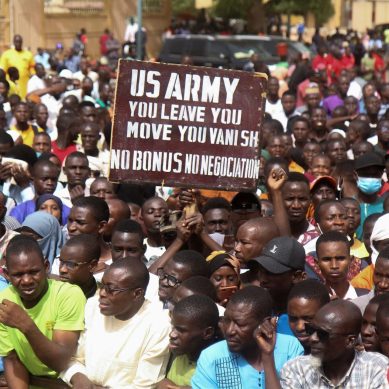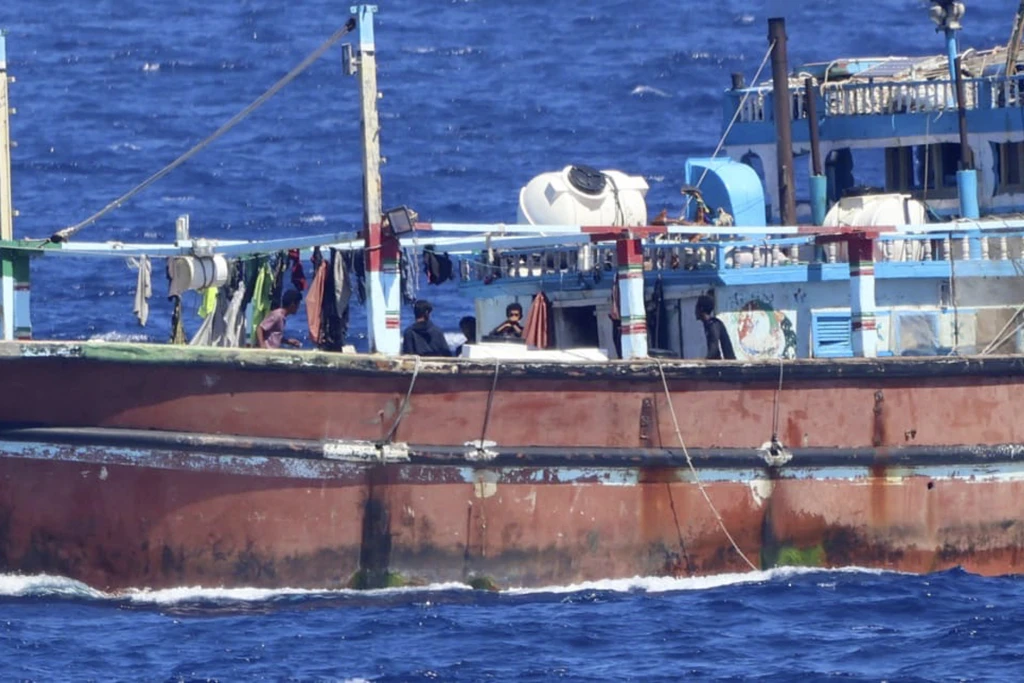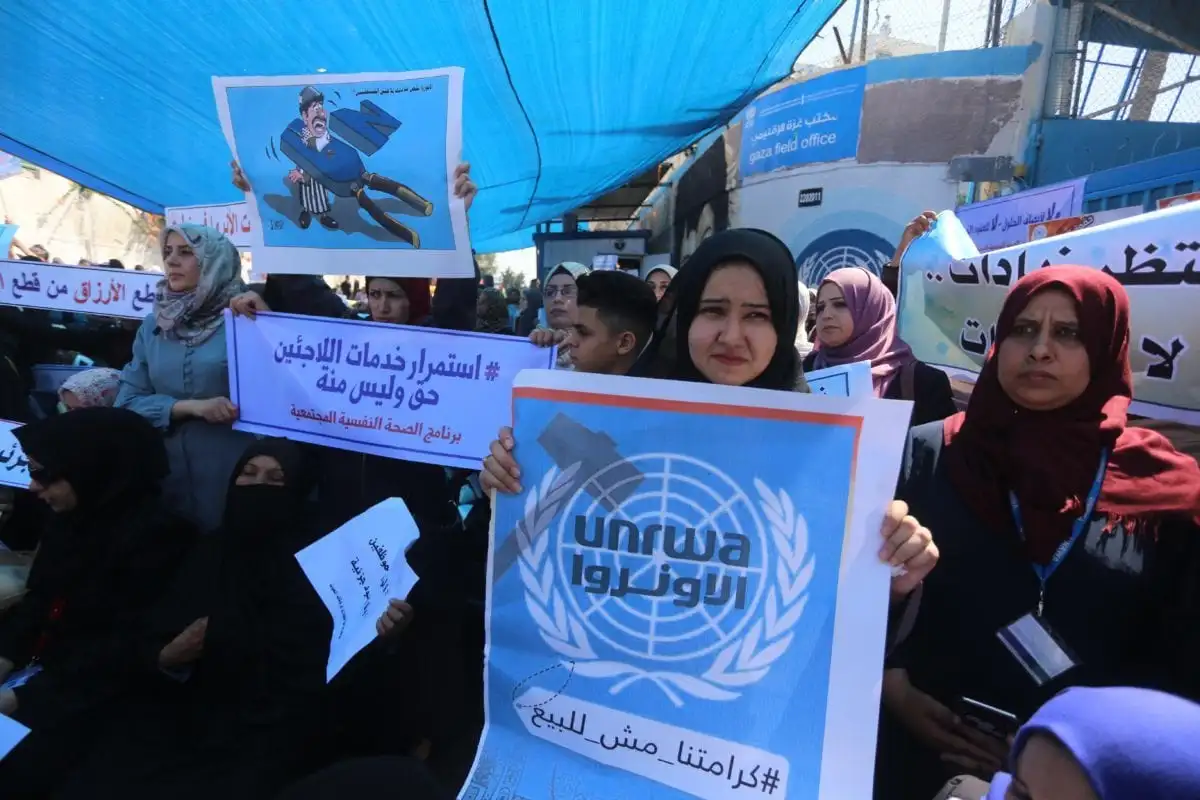
The Israel-Hamas war in Gaza has sparked a wider Middle East war, which could yet draw in the world’s major powers and threaten a global conflict.
The greatest danger is that the US and its allies could come into direct conflict with Iran, and that China and Russia fall in behind Tehran. A danger is that with tensions high, there is a big risk of miscalculation by either side.
For the moment, Tehran seems to be deterred from taking any precipitous move, but a risk remains of a direct confrontation between Iran and the US. It might well have been the Iranian Revolutionary Guard that trained Hamas forces to launch such a daring attack on Israel on October 7.
This is why South Africa could risk more than it ever might have thought in its relations with our major economic partners in the West, by giving all the diplomatic signals that it sides with Iran. Last year foreign minister Naledi Pandor visited Tehran and Hamas officials visited South Africa.
That matters when there could be an even wider war.
Most of the conflicts that were sparked by the Israel-Hamas war have been active in different forms for years, but have now become far more linked to one another and more threatening to the region and beyond. The Russians and the Chinese are probably pleased that the troubles in the Middle East mean that the US cannot give as much attention as before to Ukraine and the South China Sea.
The war in the Middle East has spread to include multiple conflicts. Hamas and Hezbollah, as well as the Houthis in Yemen and a myriad of other groups in the region are all part of Iran’s Axis of Resistance. Israel is in effect fighting on four fronts – against Hamas in Gaza, Hezbollah in Lebanon, a rebellion in the West Bank and against threats from the wider region. The Houthis in Yemen have attempted to fire long-range ballistic missiles at Israel and have attacked shipping in the Red Sea, all in sympathy with the plight of the Palestinians, they say.
The presence of two US aircraft-carrier taskforces in their region has deterred any rash action by Iran. But Tehran has been keen to demonstrate the capabilities of its Revolutionary Guard as well as its drone and long-range ballistic missile technology. Whether it be as a deterrent, for a domestic audience or opportunism, Iran has recently sought to flex its muscles. With its ally Hamas weakened, Iran might have felt under pressure to show the reach and power it still has.
Iran seized an oil tanker off Oman, attacked US bases in Iraq and Syria, and launched a missile attack on what it claims is an Israeli “espionage centre” in Erbil in northern Iraq. And last week, Tehran attacked a Pakistan-based group in reprisal for its launching attacks across the border into Iran.
Some Iranian attacks were in retaliation for attacks on its interests. Last month an Israeli air strike in Syria killed a senior Iranian Revolutionary Guard commander. Its attack on Pakistan might have been more of a message from Tehran to all separatists not to take advantage of the wider war to attack Iran.
It is the Houthis, threatening ship traffic in the Red Sea, that stand the greatest chance of drawing both the US and its allies into a direct conflict with Iran. Since the start of the year, the US has attacked Houthi targets in Yemen eight times. The Houthis seem intent on using their geographical location to act as gatekeepers to the Red Sea, and control one of the world’s most important naval choke points.
Keeping sea lanes open is crucial to the world economy. While the US and the West are taking on the Houthi threat to navigation, they have the support of much of the world. Oil prices and shipping rates have already risen as the threat in the Red Sea forces traffic to go round the Cape rather than the shortest route through the Red Sea and Suez Canal.
Whether or not the Houthis take direct orders from Tehran, the US and much of the world will be looking to Iran to put pressure on their proxy to end the threats in the Red Sea. Even China has voiced its concern over the attacks. Iran is bound to lose support even in much of the Global South if it does not help resolve this matter.
If Iran were to block the Straits of Hormuz, the choke point to access the Persian Gulf from the Gulf of Oman, the sea route for most oil from the region, it would be tantamount to an act of war. There is also the long-standing danger that Iran could still cross the threshold and actually produce nuclear weapons. If Iran went nuclear, Saudi Arabia and Turkey are likely to follow. Israel would almost certainly destroy key nuclear installations in Iran if that did happen.
Even if the war in Gaza was convincingly on the path to a settlement, there is no guarantee that other conflicts would even ease. Iran and its proxies in its Axis of Resistance across the region could be the spoiler in any peace deal.
Israel is now coming under pressure to end the war in Gaza and recognise a Palestinian state from its closest ally, the US. The US is concerned about being drawn deeper into conflicts in their region and risk of a wider war.
While Israeli Prime Minister Benjamin Netanyahu has rejected the idea of a two-state solution, he almost certainly will not be in power after the war, when negotiations do eventually take place. He has failed to come up with a public plan for the release of the hostages and for what comes after the defeat of Hamas. Netanyahu is coming under pressure from Gadi Eisenkot, a former military chief who sits in the war cabinet, to hold elections soon.
Under a proposal from a number of Arab countries, there would be a ceasefire in Gaza and the hostages would be released. In exchange for Israel’s agreement on the creation of a Palestinian state, key Arab countries would recognise Israel. There is not much detail about what sort of security guarantees Israel would have. This does at least show that there is diplomatic momentum and that a post-Netanyahu Israel may be in the offing sooner rather than later.
Even with the active diplomacy, the wider war and tension in the region are far from easing. South Africa could still be caught on the wrong side of its fundamental interests.
The US is still not riled by our stance on the Middle East and Iran. But things could still go awry, and we could find ourselves on the ‘wrong side’ of the US. Should there be a direct confrontation between the US and Iran, we will be on precarious terrain with the US and Europe.
That could severely damage our trade and economic interests.
- A Tell report / By Jonathan Katzenellenbogen, The Daily Friend writer











